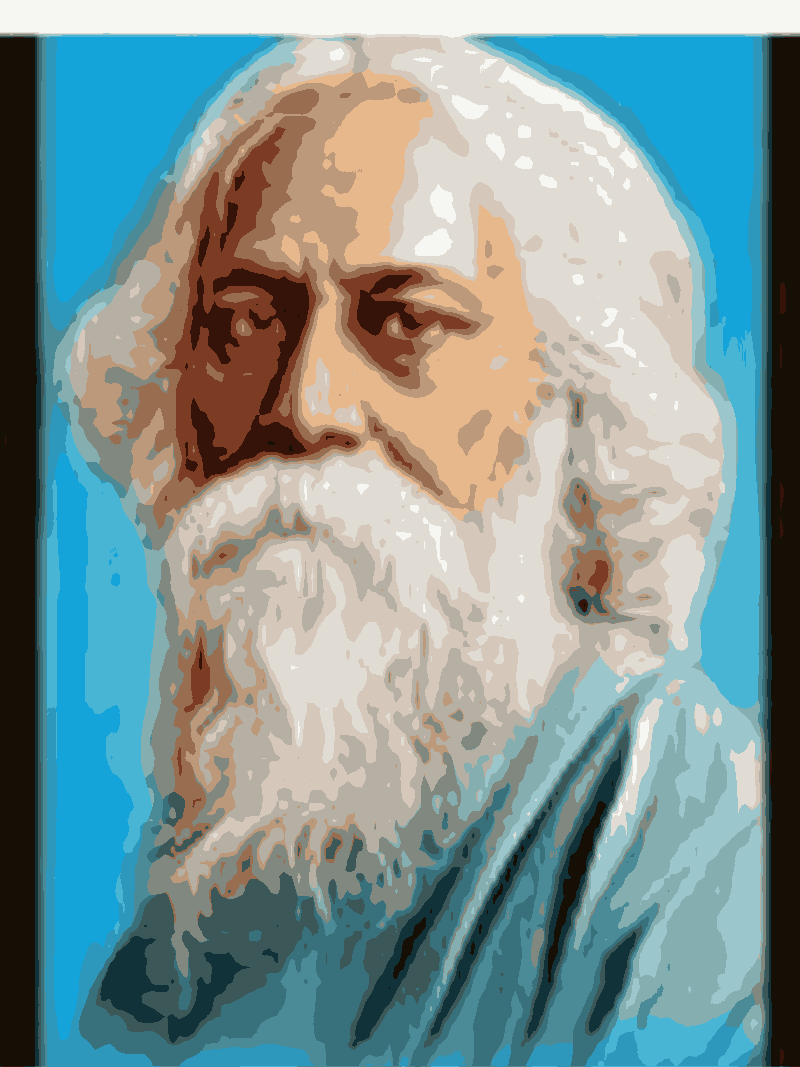Currently Empty: ₹0.00

Tagore’s Vision
In 1901, Rabindranath Tagore started a Brahmacharya Ashram at Shantiniketan. In 1922, this Ashram was inaugurated and was known as Visva-Bharati University. The university was founded by Tagore as a Centre for Culture, with major focus areas on arts, literature, language, humanities, music, etc.
Tagore’s vision was to create a place, where people can exist in harmony with mother nature.
The university started as Patha Bhavan with only 5 students. He hated the concept of knowledge within four walls, so open-air education was encouraged, which is now a reality, which is followed till now. A school with his ideals, the experience of his life, and knowledge and teachings imparted in the natural environment for an enjoyable and fruitful result. After Tagore won the Nobel Prize, this small school was expanded into an International University.
Tagore’s Early Life
Rabindranath Tagore was the youngest son of Debendranath Tagore, who was a writer, Bengali poet, Brahma Samaj philosopher, song composer, novelist, visual artist, painter. Tagore was born on 7th May 1861 in Jorasanko(ancestral mansion). As he lost his mother, Sarada Devi at a very early age, he was mostly raised by servants and maids. Tagore and his family was an active participant of the Bengal Renaissance. Tagore was educated at home, and by 17 he was sent to England for formal schooling and further studies. From a very early age, Tagore was a very exceptional kid. He started penning down his thoughts into poems at the age of 8. He also started composing artworks like poems, short stories from the age of 16. He wrote the famous short story “Bhikharini” in 1877 and also penned down the collection of poems named “Sandhya Sangeet” in 1882.
He drew his inspiration from nature, rivers, trees, birds, animals, sky, water. He started coming up with his classical poems, after taking inspiration from the classical poetry of Kalidasa. In 1873, Tagore accompanied his father and visited various countries for several months.
Rabindranath has been homeschooled, where he learned with his siblings about gymnastics, martial arts, art, anatomy, literature, history and mathematics, and various other subjects.
After his schooling in England, Tagore was asked to become a barrister in the year 1878, but he showed no interest in it. Again he was asked to learn the law, but he dropped out from there as well. Later, Tagore learned the works of Shakespeare as he was always interested in arts and literature. After training himself the essence of English, Irish and Scottish literature, he came back to India and got married to 10 years old Mrinalini Devi.
Tagore was very keen on spreading his philosophy, leadership qualities, and ideologies, which were soon spread to the rest of the world. Eventually, he became the first non-European to win the Noble Prize in Literature in the year 1913. Rabindranath also composed India’s national anthem, “Jana Gana Mana”, he also composed “Amar Sonar Bangla” which is now adopted by Bangladesh as their national anthem. The national anthem of Sri Lanka was inspired by his works as well.
Establishment and Importance of Santiniketan, the Abode of Peace
Previously, Santiniketan was known as Bhubandanga, the name was kept after a local dacoit, Bhuban Dakat, who used to do “Darwani” or guard the area, which was owned by the Tagore family.
In 1862, Maharshi Debendranath Tagore, father of Rabindranath Tagore, rediscovered a piece of land or zamin that was very peaceful, away from the worldly chaos, which resulted in an ideal place for meditating. Later he renamed this place as Santiniketan, which means “Abode of Peace”. Gradually, it became a spiritual center where people either used to come or were invited to join for meditation and prayers. The very next year in 1863, Debendranath Tagore founded an ‘Ashram’ here. As the years rolled down, Amrakunja, Saal Bithi, Chatim Tala, Santiniketan Bari, Kanch Mandir, Sonajhuri, came into being.
Holi or Dol or Basanta Utsav was the tradition, which was first started by Kobiguru, Rabindranath Tagore at Visva-Bharati, Santiniketan. From the very beginning, Tagore has initiated and encouraged playing with Abir, at present which is known as dry holi to save water.
Successful works of Tagore
- Manasi/The Ideal One – 1890
- Sonar Tari/The Golden Boat – 1894
- Gitanjali/Song Offerings – 1910
- Gitimalya/Wreath Of Songs – 1914
- Balaka/The flight Of Cranes – 1916
- The Gardener – 1913
- Fruit-Gathering – 1916
- The Fugitive – 1921
- Raja/The king Of Dark Chamber – 1910
- Dakghar/The Post Office – 1912
- Achalayatan/The Immovable – 1912
- Muktadhara/The Waterfall – 1922
- Raktakarabi/Red Oleanders – 1926
- Gora – 1910
- Ghare Baire – 1916
- Yogayog – 1929
He wrote lots of songs, dramas, autobiographies, he died on 7th August 1941.
Tagore’s philosophy, his ideologies eventually became the voice of India’s various spiritual heritage. His fame surged and caught the limelight across continents in the form of reformer, philosopher, lecture tours. He was one of the great minds who was ahead of his time, visualizing the future.
